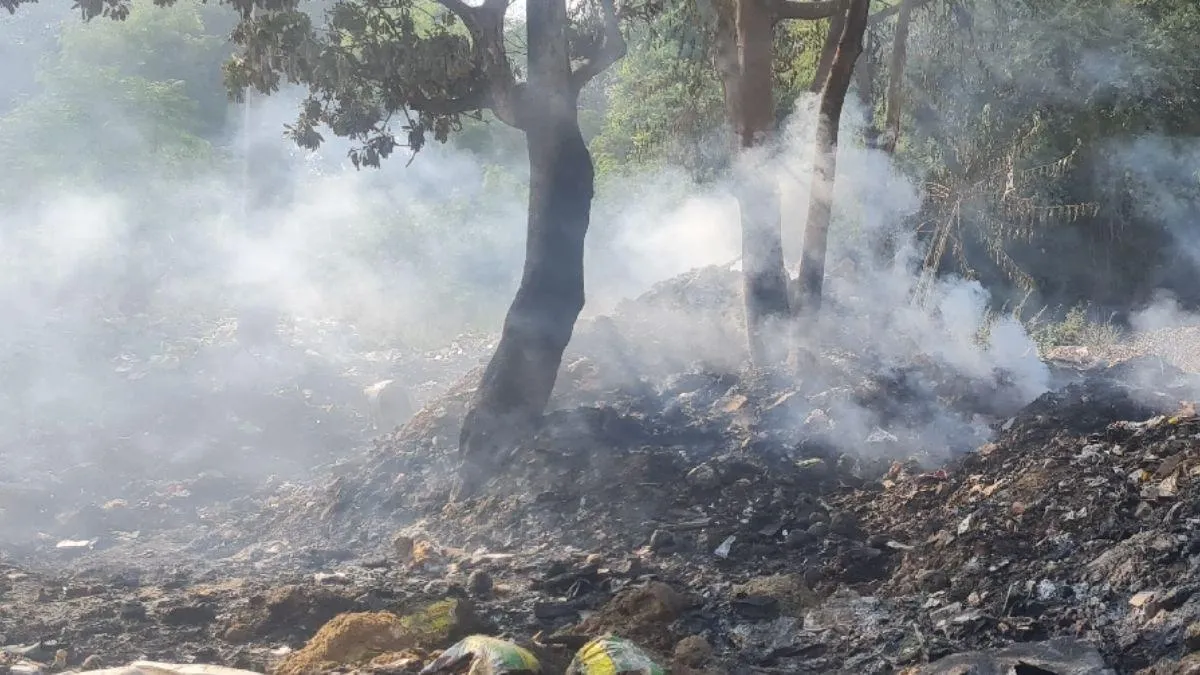- By Akansha Pandey
- Thu, 16 Oct 2025 10:51 AM (IST)
- Source:Jagran News Network
Poisonous air is beginning to plague Gurugram even before Diwali. The city's Air Quality Index (AQI) reached 267 at 8:00 am, which falls into the 'Very Poor' category. According to data from the Meteorological Department and the Pollution Control Board, the situation is expected to deteriorate further in the coming days.
Following the use of fireworks during Diwali, the AQI is projected to surpass 400, pushing the air quality into the 'Severe' category. Experts note a continuous increase in the levels of toxic gases and particulate matter (PM2.5 and PM10). This is leading to a rise in health complaints such as eye irritation, sore throat, headaches, coughing, and breathing difficulties. This situation can be particularly dangerous for the elderly, children, and asthma patients.
In response to the consistently rising pollution levels, the Commission for Air Quality Management (CAQM) implemented the first stage of the Graded Response Action Plan (GRAP) on Tuesday. The problem of smog is also expected to worsen as temperatures continue to fall.
Key Reasons For Rising Pollution
Damaged Roads: Broken and dusty roads across the city have not been repaired for a long time.
Construction Negligence: Dust control measures are being ignored at construction sites.
Vehicle Emissions: Increased vehicular pressure leads to traffic jams, doubling the emission of smoke.
Waste Burning: Incidents of garbage burning are also contributing to the pollution.
Traffic Jams: A Major Contributor To Pollution
Persistent traffic jams at major intersections and roads in Gurugram are exacerbating pollution levels. Long queues of vehicles have become common in areas like Rajiv Chowk, Subhash Chowk, IFFCO Chowk, Old Railway Road, New Railway Road, Old Delhi Road, Basai Road, and Pataudi Road. During peak hours on the Delhi-Jaipur Highway, slow-moving traffic significantly increases the concentration of carbon and nitrogen oxides from petrol and diesel fumes, making the air more toxic.
What is Smog?
The term 'smog' is a combination of two words: 'smoke' and 'fog'. It is a dense, polluted fog that forms when fine particles of smoke and fog mix. This condition is especially prevalent during the winter season when wind speeds are low, causing pollutants to get trapped in the atmosphere. Smog reduces visibility and is extremely harmful to health.
Air Quality Index (AQI) and its Health Effects
AQI Level Category Health Impact
| AQI level | Category | Health effects |
|---|---|---|
| 0–50 | Good | no effect |
| 51–100 | satisfactory | Light sensitivity |
| 101–200 | medium | Mild irritation, trouble for asthma patients |
| 201–300 | Bad | Cough, headache, breathing problems |
| 301–400 | nasty | Lungs affected, heart patients at risk |
| 401–500 | Serious | Shortness of breath, burning eyes, fatigue |
Measures Under GRAP Stage 1
The first stage of GRAP mandates the following measures:
- Avoid activities that generate dust.
- Do not burn garbage.
- Increase the use of public transportation.
Also Read: Dehradun Diwali Traffic Plan 2025: Vehicle Entry Banned In Markets For 5 Days; Check New Rules
- Construction and demolition sites with a plot area larger than 500 square meters must be registered on the web portal and ensure compliance with dust control regulations.
- The municipal corporation must ensure the proper collection and disposal of C&D (Construction and Demolition) waste and solid waste.
- Mechanised sweeping and water sprinkling must be carried out.
- The use of coal and wood in tandoors is prohibited.
Also Read: Indian Railways Announces Puja Special Trains Via Gorakhpur: Check Full Schedule, Routes And Dates

